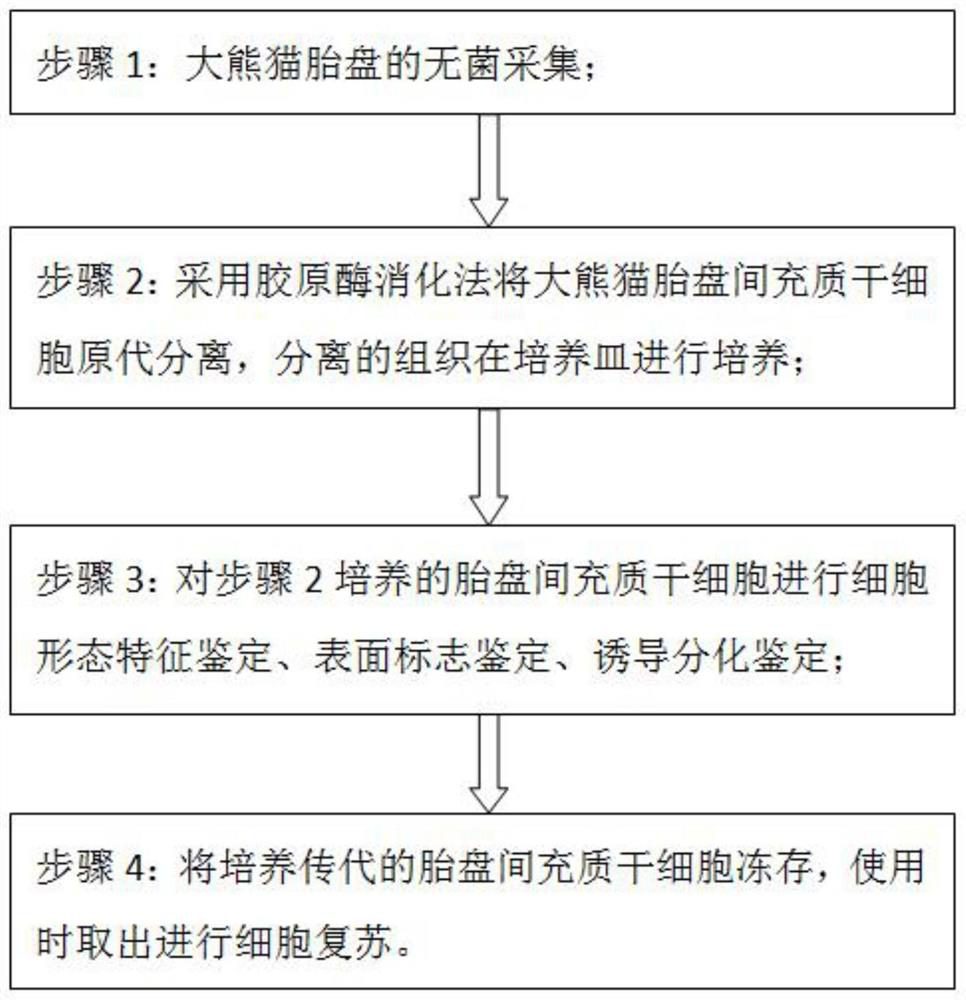Panda placenta mesenchymal stem cell separation and culture method
A technology of mesenchymal stem cells and culture methods, applied in the field of separation and culture of giant panda placental mesenchymal stem cells, can solve the problems of difficult migration, difficulty in obtaining high-purity giant panda placental mesenchymal stem cells, polluting cells, etc., to reduce pollution The effect of the phenomenon
- Summary
- Abstract
- Description
- Claims
- Application Information
AI Technical Summary
Problems solved by technology
Method used
Image
Examples
Embodiment
[0040] Refer to the attached figure 1 , is a flow chart of the method of the present invention, a method for separating and culturing giant panda placental mesenchymal stem cells, comprising the following steps:
[0041] Step 1: Aseptic collection of giant panda placenta, the specific operations are as follows:
[0042] Step 1.1: The giant panda placenta after natural childbirth was stored in normal saline containing 1% double antibody at 25°C, and transported to the laboratory within 6 hours for primary cell isolation;
[0043] Step 1.2: Transfer the placental tissue to a petri dish with 75% alcohol and soak it for 30s on an ultra-clean workbench. After taking it out, rinse it with normal saline for 5 to 10 times, and then immerse it in a normal saline containing 3% to 5% of tertiary antibodies for washing. For 1 min, transfer the placental tissue to a new petri dish, and repeat immersion and washing with the above-mentioned physiological saline containing 3% to 5% of the te...
PUM
 Login to View More
Login to View More Abstract
Description
Claims
Application Information
 Login to View More
Login to View More - Generate Ideas
- Intellectual Property
- Life Sciences
- Materials
- Tech Scout
- Unparalleled Data Quality
- Higher Quality Content
- 60% Fewer Hallucinations
Browse by: Latest US Patents, China's latest patents, Technical Efficacy Thesaurus, Application Domain, Technology Topic, Popular Technical Reports.
© 2025 PatSnap. All rights reserved.Legal|Privacy policy|Modern Slavery Act Transparency Statement|Sitemap|About US| Contact US: help@patsnap.com



